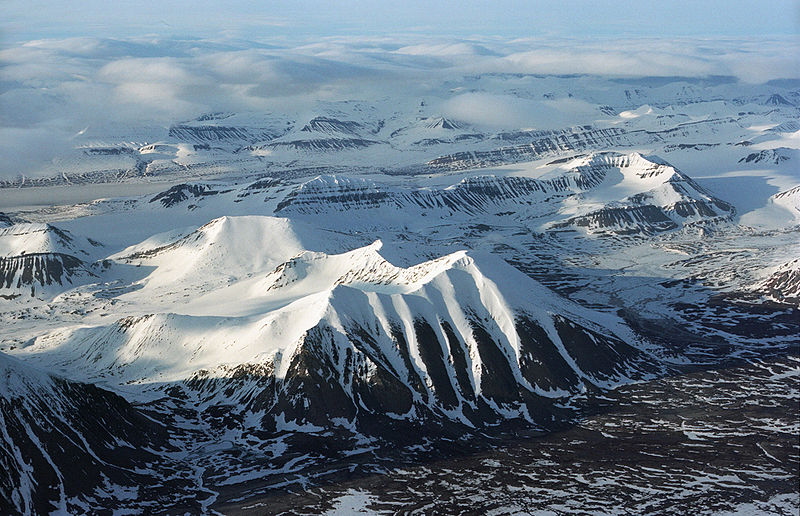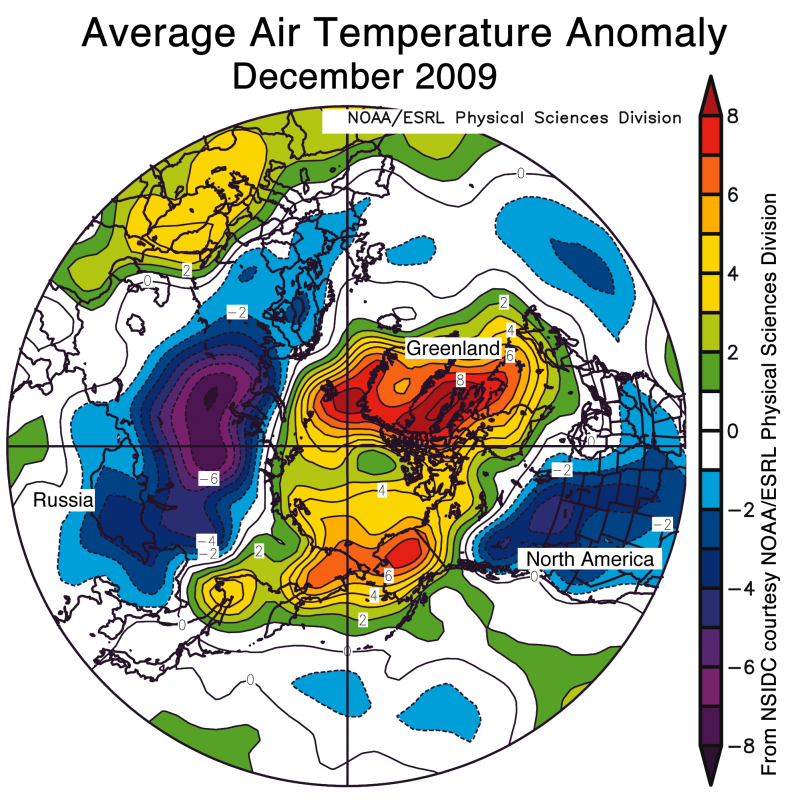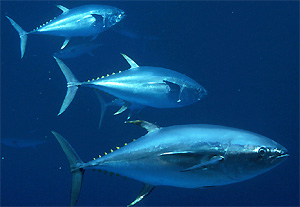
Photo by Jerzy Strzelecki, courtesy Wikipedia
A paper in Nature Geoscience offers new insight into what happens to mercury deposited on Arctic snow from the atmosphere.
About 2,000 tons of mercury enter the environment each year from coal-burning power plants, incinerators and chlorine-producing plants. As a gas, mercury isn’t that reactive and can float in the atmosphere for a year or more. But once oxidized, via sunlight and (usually) bromine, it becomes highly reactive. Deposited onto land or water, converted by microorganisms into highly-toxic methylmercury, it’s then biomagnified through higher trophic levels of the foodweb.
The new research reveals the pathways in the Arctic. Mercury remains gaseous through the dark winter, since there’s no sunlight to oxidize it and not much bromine to catalyze it. But in the spring, sea ice breaks apart and allows water vapor carrying bromine from the sea to rise as clouds. Bromine in the atmosphere interacts with sunlight to convert gaseous mercury into reactive mercury. The activated mercury then sticks to snowflakes and ice crystals in the air and falls to the surface as snow.
This causes a seasonal mercury depletion event. Normally steady atmospheric mercury levels quickly drop to nearly nothing. Meanwhile mercury concentrations on the snow’s surface rise to extremely high levels. Joel Blum, the John D. MacArthur Professor of Geological Sciences, told U Michigan:
“When we first started observing these events, we didn’t know how much of that mercury returned back to the atmosphere, so the high level of mercury in snow was a great concern. But the more we learned, the more we realized that the sunlight shining on the snow typically will cause much of the oxidized mercury to become reduced and return to the atmosphere as a gas. And it turns out that its re-release to the atmosphere has a striking “fingerprint’ that we can use to study the progress of this reaction through time.”
Using isotopic fractionation, the researchers can identify and estimate how much mercury is lost from the snowpack and how much remains with the snowpack, to potentially enter Arctic ecosystems. Any mercury not re-emitted to the air is likely to retain the unique fingerprint, aiding future researchers in tracking mercury through the polar north.















